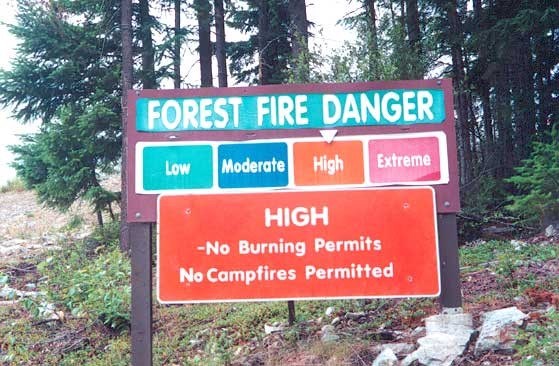Below-average snowpack and precipitation totals the cause
The Whistler area’s forest fire hazard is still high despite a recent smattering of showers and cool, cloudy conditions.
Local fire protection officer Andy Goss told Pique Newsmagazine that the Sea-to-Sky region went more than two weeks – 16 days to be exact – without any precipitation earlier this month.
"We haven’t had any major fires," he said in a telephone interview from the forest service’s Pemberton Fire Base. "It’s been pretty quiet around here this year – and that’s a good thing."
But the hazard has prompted the Resort Municipality of Whistler to impose a campfire and open-fire ban within its boundaries.
"A small fire can grow to a large one in a very short period of time," said Whistler fire chief Bruce Hall. "This could affect not only the forests but the community."
The B.C. Forest Service is predicting a more severe than normal fire season this year due to below-average snowpack and precipitation totals.
There is also an open-fire ban in the Squamish Forest District, which encompasses the Squamish, Whistler and Pemberton areas. Campfires, however, are still being permitted.
Goss said late summer is traditionally when the local forest fire hazard is at its highest.
"June is usually rainy and July is a mixed bag," he said. "But August is when the coastal fuel types are at their driest."
In 1999, there were two notable forest fires in the area: a 9-hectare blaze near Meager Creek and a 33-ha fire at the junction of the Elaho and Clendenning rivers.
The Pemberton base is staffed with two fire protection officers, two three-person initial attack crews and two 20-person unit crews, the Mount Currie "Salish" and the D’Arcy "Heatseekers."
According to Goss, the Mount Currie unit is currently fighting a fire in White Swan provincial park near Invermere, while the D’Arcy unit is attending a blaze near Mission.
"We usually get moved around quite a bit," he said.
There are also two fire protection officers and one three-person initial attack crew based in Squamish.
There have been three major forest fires in B.C. this summer, all located in the southeast part of the province: the 250-ha blaze in the Rocky Mountains south of Invermere and two 350-ha fires in the Columbia Mountains north of Golden.
The fires have, for the most part, been contained and forest service crews – including the Mount Currie unit – are in mop-up mode.
One of the province’s worst-ever forest fires occurred in Salmon Arm during 1998. The blaze engulfed 6,000 ha, caused the evacuation of nearly 7,000 people, destroyed 40 buildings and cost more than $10 million to extinguish.
Another notable fire occurred near Penticton in 1994. More than 5,500 ha were burned, 3,500 people were evacuated and 18 buildings went up in flames.
More recently, an out-of-control forest fire in Washington state’s North Cascade Mountains killed four U.S. Forest Service employees last week.
There have been 672 wildfires reported in B.C. this year. Seventy per cent of the fires have been caused by human activity.
According to the forest service, abandoned campfires – and human carelessness – are the leading causes of wildfires.




